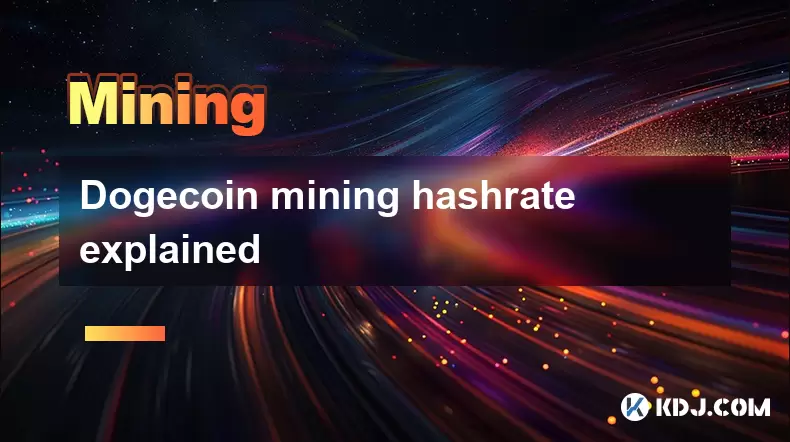-
 Bitcoin
Bitcoin $118,209.3536
1.16% -
 Ethereum
Ethereum $3,151.7546
5.98% -
 XRP
XRP $2.9277
2.35% -
 Tether USDt
Tether USDt $1.0000
0.00% -
 BNB
BNB $689.7099
1.26% -
 Solana
Solana $163.4270
1.91% -
 USDC
USDC $1.0000
0.02% -
 Dogecoin
Dogecoin $0.1983
3.74% -
 TRON
TRON $0.3008
0.51% -
 Cardano
Cardano $0.7435
2.86% -
 Hyperliquid
Hyperliquid $47.6547
-0.48% -
 Stellar
Stellar $0.4625
2.79% -
 Sui
Sui $3.9921
2.71% -
 Chainlink
Chainlink $16.0608
4.23% -
 Hedera
Hedera $0.2348
1.56% -
 Bitcoin Cash
Bitcoin Cash $496.6985
1.25% -
 Avalanche
Avalanche $21.9038
5.41% -
 UNUS SED LEO
UNUS SED LEO $8.8356
-1.88% -
 Shiba Inu
Shiba Inu $0.0...01364
5.31% -
 Toncoin
Toncoin $3.1102
4.35% -
 Litecoin
Litecoin $95.9756
3.59% -
 Polkadot
Polkadot $4.0925
5.78% -
 Monero
Monero $333.7622
-1.44% -
 Uniswap
Uniswap $9.1968
2.25% -
 Bitget Token
Bitget Token $4.6378
6.23% -
 Pepe
Pepe $0.0...01282
6.77% -
 Dai
Dai $1.0002
0.03% -
 Ethena USDe
Ethena USDe $1.0005
0.00% -
 Aave
Aave $329.9143
4.49% -
 Bittensor
Bittensor $441.4995
6.89%
Dogecoin mining hashrate explained
Dogecoin's hashrate reflects network security and miner participation, with higher values indicating stronger blockchain protection and increased mining interest.
Jul 16, 2025 at 01:21 pm

What Is Dogecoin Mining Hashrate?
Dogecoin mining hashrate refers to the total computational power being used by miners on the Dogecoin network to solve cryptographic puzzles and validate transactions. This metric is crucial in understanding how secure and efficient the Dogecoin blockchain is at any given time. The higher the hashrate, the more difficult it becomes for malicious actors to alter the blockchain, as they would need an immense amount of computing power to do so.
In practical terms, hashrate is measured in hashes per second (H/s), with common denominations including kilohashes (KH/s), megahashes (MH/s), gigahashes (GH/s), terahashes (TH/s), and even petahashes (PH/s). Miners contribute their processing power to the network, and collectively, this forms the global hashrate for Dogecoin.
How Does Mining Hashrate Affect Dogecoin's Security?
A high mining hashrate significantly enhances the security of the Dogecoin blockchain. When a large number of miners are actively participating in the network, it becomes increasingly difficult for attackers to perform a 51% attack — where a single entity controls more than half of the network’s mining power.
This decentralized nature ensures that no single party can manipulate transaction data or double-spend coins. As the hashrate increases, so does the cost and complexity of launching such an attack, making the network more resilient against threats.
Additionally, a rising hashrate indicates growing interest and investment in Dogecoin mining, which further reinforces trust in the network.
Factors Influencing Dogecoin Mining Hashrate
Several variables impact the overall hashrate of the Dogecoin network:
- Mining hardware efficiency: More powerful GPUs or ASICs can compute hashes faster, contributing to a higher total hashrate.
- Electricity costs: Lower energy costs make mining more profitable, encouraging more participants to join the network.
- Market price of DOGE: When the price rises, mining becomes more lucrative, drawing in more miners and increasing the hashrate.
- Mining difficulty adjustments: Dogecoin automatically adjusts mining difficulty every block to maintain a consistent block time of approximately one minute. If the hashrate increases, the difficulty will rise accordingly.
These factors work together dynamically to influence the current state of the Dogecoin mining ecosystem.
How to Monitor Dogecoin Mining Hashrate
Monitoring the real-time hashrate of Dogecoin is essential for miners and investors alike. There are several platforms and tools available that provide up-to-date information:
- Blockchain explorers: Websites like blockchair.com or blockcypher.com allow users to view live statistics, including hashrate trends.
- Mining pool dashboards: Many mining pools display aggregated hashrate contributed by their members, giving insight into the network’s health.
- Cryptocurrency analytics platforms: Sites like CoinWarz or WhatToMine offer comparative metrics across different cryptocurrencies, including Dogecoin.
Users can also utilize APIs from these services to integrate hashrate data into personal monitoring systems or trading strategies.
How to Calculate Mining Profitability Based on Hashrate
For miners, understanding how hashrate affects profitability is key. Here’s a breakdown of the process:
- Determine your mining hardware’s hashrate: For example, a GPU might deliver 20 MH/s.
- Check current mining difficulty and block reward: These values change over time and affect how many Dogecoins you can mine.
- Factor in electricity costs: Use your local kWh rate to calculate daily expenses.
- Use online calculators: Tools like the ones on CryptoCompare or NiceHash help estimate earnings based on input parameters.
Profitability = (Hashrate × Block Reward) ÷ Difficulty × Price of DOGE – Electricity Cost
Understanding this formula helps miners optimize their operations and choose the most efficient hardware and pools.
Commonly Asked Questions About Dogecoin Mining Hashrate
Q: Why does Dogecoin’s hashrate fluctuate so much?
Dogecoin uses the Scrypt algorithm, which is also used by Litecoin. Miners often switch between Litecoin and Dogecoin depending on profitability, causing sudden changes in hashrate.
Q: Can I mine Dogecoin solo with a regular GPU?
Yes, but due to the high competition and variable hashrate, joining a mining pool is generally more profitable and stable for individual miners.
Q: How does hashrate relate to mining difficulty?
Hashrate and difficulty are closely linked. As more miners join the network, the difficulty increases to ensure blocks are mined roughly every minute, regardless of total hashrate.
Q: Does a higher hashrate mean slower transactions?
No. Dogecoin’s block time remains consistent due to automatic difficulty adjustments. A higher hashrate means increased security, not slower transaction confirmations.
Disclaimer:info@kdj.com
The information provided is not trading advice. kdj.com does not assume any responsibility for any investments made based on the information provided in this article. Cryptocurrencies are highly volatile and it is highly recommended that you invest with caution after thorough research!
If you believe that the content used on this website infringes your copyright, please contact us immediately (info@kdj.com) and we will delete it promptly.
- Crypto ROI Revolution: Is BFX the Next Big Thing?
- 2025-07-16 21:30:13
- Dogecoin, HBAR, and Partnerships: A Tale of Memes vs. Utility
- 2025-07-16 21:30:13
- Cha-Ching! That £2 Coin Could Be Worth a Mint!
- 2025-07-16 22:10:12
- Meme Coin Mania Meets Crypto Payroll & Burger Bites: A New York Minute on the Latest Trends
- 2025-07-16 22:10:13
- China Gold Market: Investment and Focus in 2025
- 2025-07-16 22:15:13
- FxWirePro: Token Unlock Tsunami – Navigating the ARBUSD Waters
- 2025-07-16 22:15:13
Related knowledge

How are crypto mining profits taxed?
Jul 14,2025 at 12:28am
Understanding Cryptocurrency Mining and TaxationCryptocurrency mining involves validating transactions on a blockchain network and earning rewards in ...

How to keep a mining rig cool
Jul 12,2025 at 01:42pm
Understanding the Importance of Cooling in Mining RigsCryptocurrency mining is an intensive process that places heavy demand on hardware components, p...

How to mine crypto on a gaming PC
Jul 16,2025 at 12:00pm
What is Crypto Mining on a Gaming PC?Crypto mining involves using your computer's processing power to validate transactions on a blockchain network. A...

How to set up a crypto miner
Jul 16,2025 at 09:14am
Understanding Ethereum Gas Fees: What Are They and How Do They Work?Ethereum gas fees are a fundamental aspect of the network, representing the cost r...

Can you mine crypto on a laptop?
Jul 16,2025 at 02:21am
Is It Feasible to Mine Cryptocurrency on a Laptop?Mining cryptocurrency on a laptop is technically possible, but feasibility depends heavily on the ha...

Is crypto mining worth it?
Jul 16,2025 at 01:21am
Understanding the Basics of Crypto MiningCrypto mining refers to the process of validating transactions on a blockchain network by solving complex mat...

How are crypto mining profits taxed?
Jul 14,2025 at 12:28am
Understanding Cryptocurrency Mining and TaxationCryptocurrency mining involves validating transactions on a blockchain network and earning rewards in ...

How to keep a mining rig cool
Jul 12,2025 at 01:42pm
Understanding the Importance of Cooling in Mining RigsCryptocurrency mining is an intensive process that places heavy demand on hardware components, p...

How to mine crypto on a gaming PC
Jul 16,2025 at 12:00pm
What is Crypto Mining on a Gaming PC?Crypto mining involves using your computer's processing power to validate transactions on a blockchain network. A...

How to set up a crypto miner
Jul 16,2025 at 09:14am
Understanding Ethereum Gas Fees: What Are They and How Do They Work?Ethereum gas fees are a fundamental aspect of the network, representing the cost r...

Can you mine crypto on a laptop?
Jul 16,2025 at 02:21am
Is It Feasible to Mine Cryptocurrency on a Laptop?Mining cryptocurrency on a laptop is technically possible, but feasibility depends heavily on the ha...

Is crypto mining worth it?
Jul 16,2025 at 01:21am
Understanding the Basics of Crypto MiningCrypto mining refers to the process of validating transactions on a blockchain network by solving complex mat...
See all articles

























































































